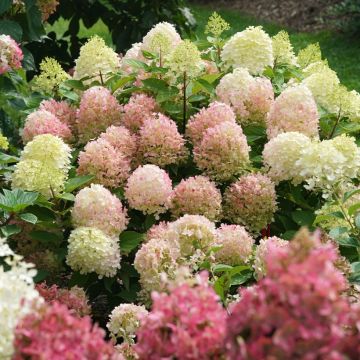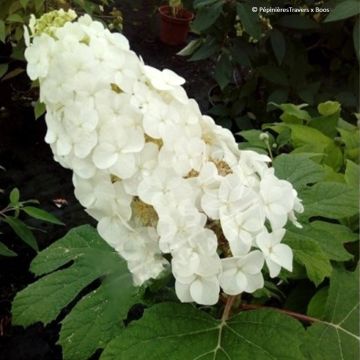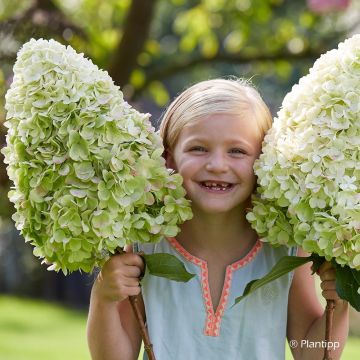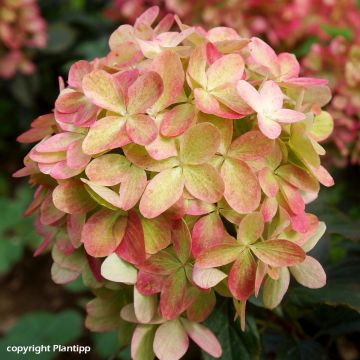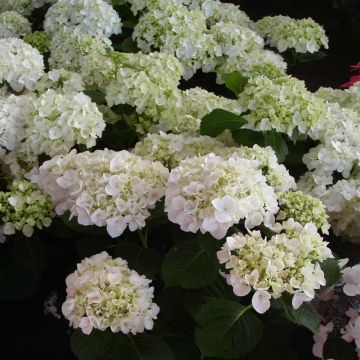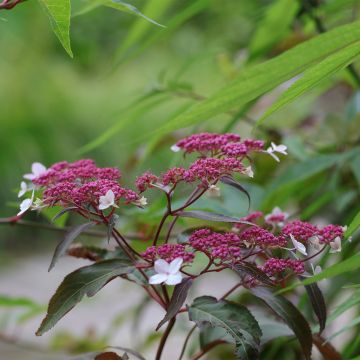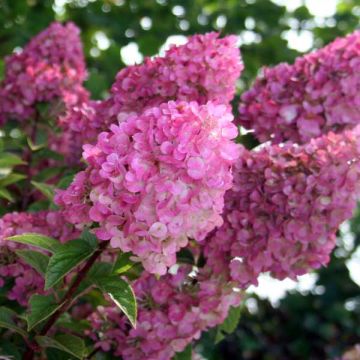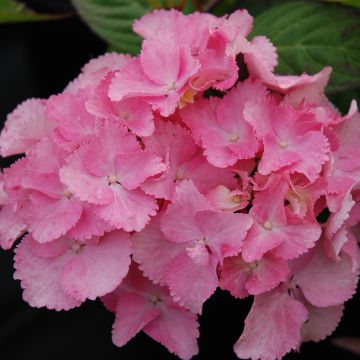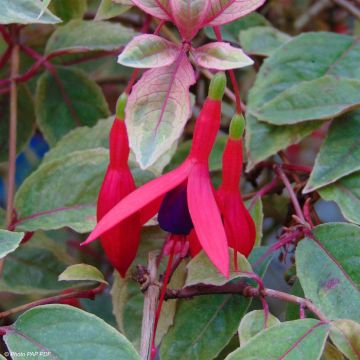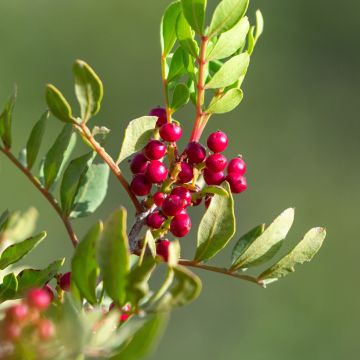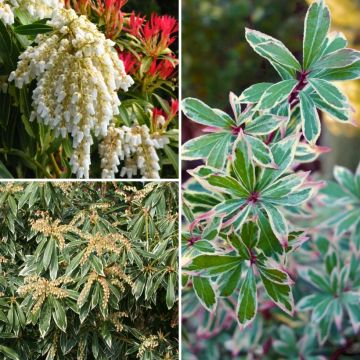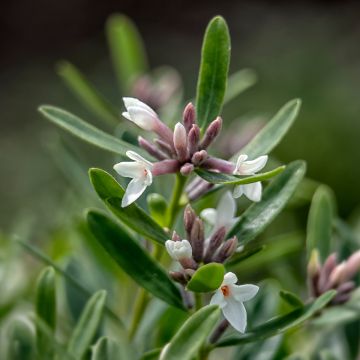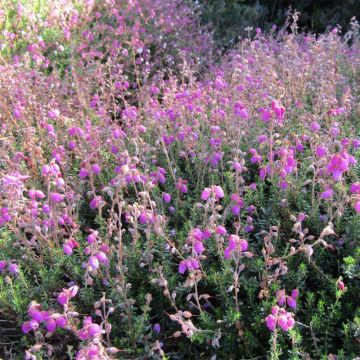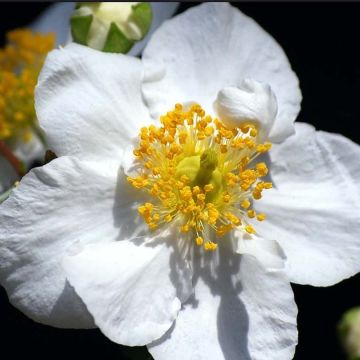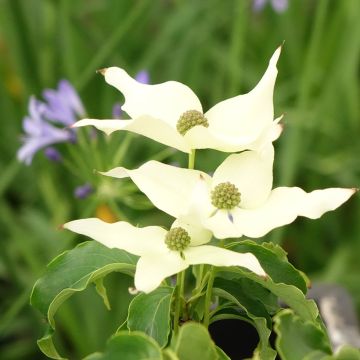

Hydrangea macrophylla Blauer Prinz
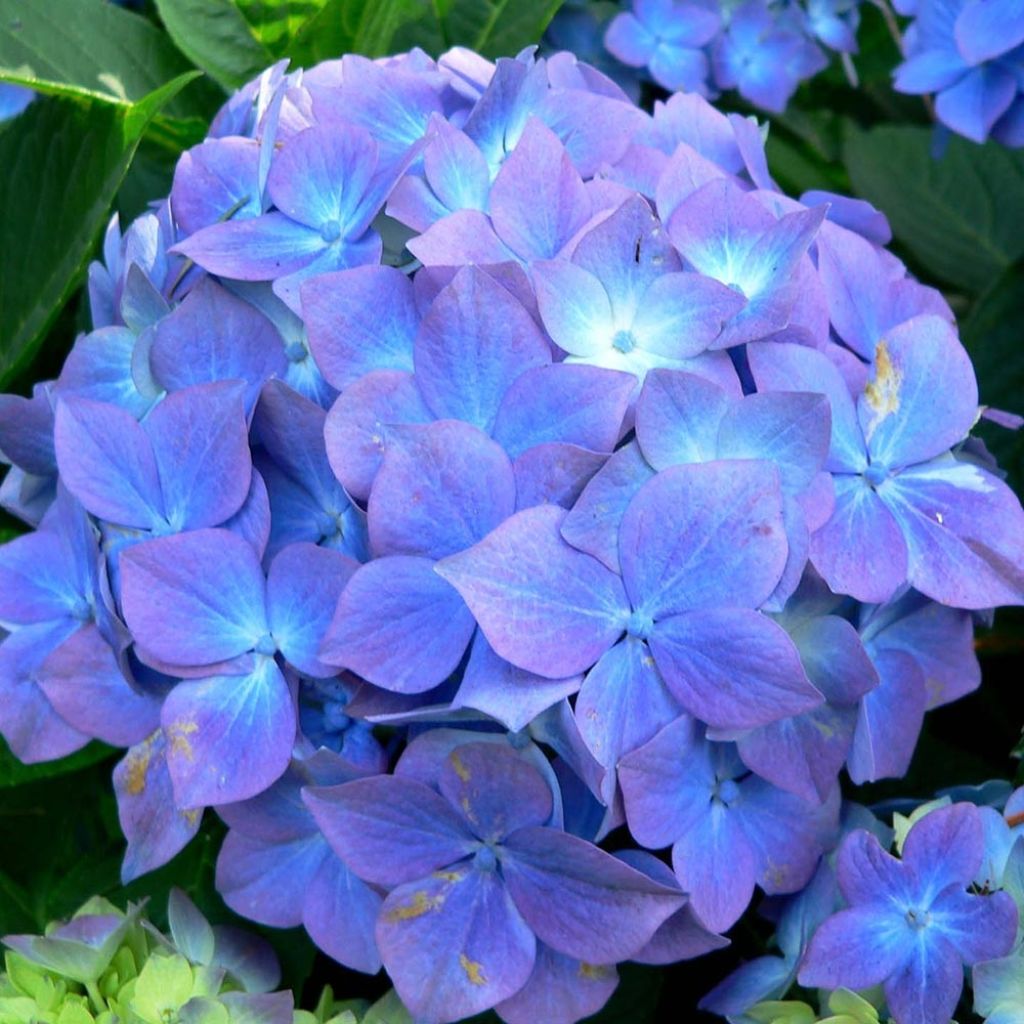

Hydrangea macrophylla Blauer Prinz
Hydrangea macrophylla Blauer Prinz
Hydrangea macrophylla Blauer Prinz
Bigleaf Hydrangea, French Hydrangea, Mophead Hydrangea
Special offer!
Receive a €20 voucher for any order over €90 (excluding delivery costs, credit notes, and plastic-free options)!
1- Add your favorite plants to your cart.
2- Once you have reached €90, confirm your order (you can even choose the delivery date!).
3- As soon as your order is shipped, you will receive an email containing your voucher code, valid for 3 months (90 days).
Your voucher is unique and can only be used once, for any order with a minimum value of €20, excluding delivery costs.
Can be combined with other current offers, non-divisible and non-refundable.
Why not try an alternative variety in stock?
View all →This plant carries a 24 months recovery warranty
More information
We guarantee the quality of our plants for a full growing cycle, and will replace at our expense any plant that fails to recover under normal climatic and planting conditions.
Would this plant suit my garden?
Set up your Plantfit profile →
Description
Hydrangea macrophylla 'Blauer Prinz' allows for the creation of large beds or superb hedges in partial shade or shade. It is a medium-sized ball-shaped hydrangea, which blooms abundantly quite late in the season, and remains decorative until November. This round shrub is adorned with inflorescences in small but numerous balls nestled in the foliage, whose colour is determined by the soil: light blue in acidic soil or soft pink in neutral soil. They fade beautifully, turning green and then deep red at the end of the season. This variety is particularly suitable for making bouquets.
Hydrangea macrophylla 'Blauer Prinz' is one of the many hybrids obtained from H. macrophylla and H. aspera, among others. The Hydrangeaceae family is native to China and Japan. This variety is characterised by vigorous growth, excellent floribundity, and late flowering. It usually blooms from the end of July. This shrub is barely taller than it is wide, reaching 1.5m (5ft) in height and width at maturity, with relatively fast growth. Its dense and round inflorescences measure from 8 to 12cm (3 to 5in) in diameter. The sterile florets successively change from green-yellow to pale-yellow before turning mauve-blue or pastel pink depending on the soil pH. At maturity, the flower balls are gradually invaded by different shades of green, red, purple, or violet. The tiny fertile florets, on the other hand, are barely visible, submerged in the globular head. The flowering is accompanied by dense, medium green, leathery, deciduous foliage in winter. It often takes on a beautiful purple hue in autumn, depending on the soil and the year. Hydrangeas can live for at least 50 years.
'Blauer Prinz' is a perfectly hardy shade variety. Hydrangeas are well known for brightening the north side of houses. This one thrives in the east with morning sun, or in the north, in beds as well as hedges. This variety is suited for cultivation in open ground as well as in large containers placed on a terrace or near an entrance. Even though these plants fear limestone, hydrangeas are not strictly acid-loving plants. They thrive in all non-calcareous but rich soils. Pair them with magellanica fuchsias or annual impatiens, or plant spring-flowering bulbs in front of their round silhouette. Enjoy their magnificent flowering in the garden or in fresh or dried bouquets in the house for a long time.
Report an error about the product description
Hydrangea macrophylla Blauer Prinz in pictures
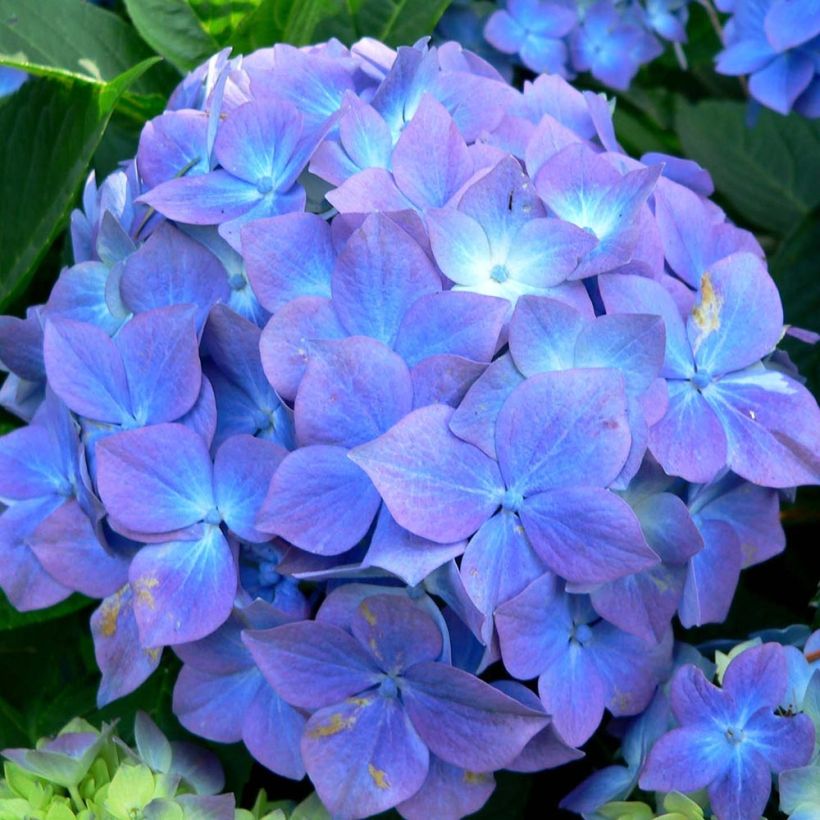



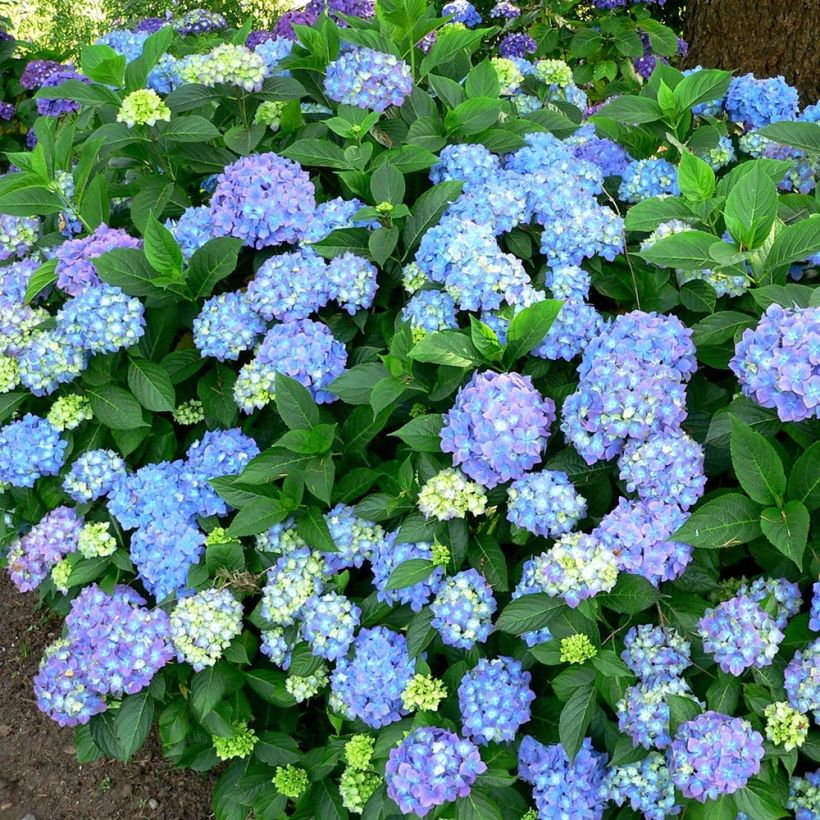

Plant habit
Flowering
Foliage
Botanical data
Hydrangea
macrophylla
Blauer Prinz
Hydrangeaceae
Bigleaf Hydrangea, French Hydrangea, Mophead Hydrangea
Cultivar or hybrid
Other Hydrangeas
View all →Planting and care
Plant in spring or early autumn, in a slightly shaded position, for example against an east-facing wall, or even to the north. Protect it from cold and drying winds. It does not necessarily require ericaceous soil, but appreciates deep, moist but well-drained, fairly fertile soil, possibly enriched with a good compound fertiliser before planting. It does not tolerate limestone, which causes its foliage to yellow and can cause it to wither. If planting near a wall and the soil is dry at its base, place the root ball at least 30 to 40cm (12 to 16in) away from it and incorporate a quantity of well-decomposed compost to better retain moisture in the soil. Very hardy, it can be planted in cold regions without fear.
Planting period
Intended location
Care
This item has not been reviewed yet - be the first to leave a review about it.
Similar products
Haven't found what you were looking for?
Hardiness is the lowest winter temperature a plant can endure without suffering serious damage or even dying. However, hardiness is affected by location (a sheltered area, such as a patio), protection (winter cover) and soil type (hardiness is improved by well-drained soil).

Photo Sharing Terms & Conditions
In order to encourage gardeners to interact and share their experiences, Promesse de fleurs offers various media enabling content to be uploaded onto its Site - in particular via the ‘Photo sharing’ module.
The User agrees to refrain from:
- Posting any content that is illegal, prejudicial, insulting, racist, inciteful to hatred, revisionist, contrary to public decency, that infringes on privacy or on the privacy rights of third parties, in particular the publicity rights of persons and goods, intellectual property rights, or the right to privacy.
- Submitting content on behalf of a third party;
- Impersonate the identity of a third party and/or publish any personal information about a third party;
In general, the User undertakes to refrain from any unethical behaviour.
All Content (in particular text, comments, files, images, photos, videos, creative works, etc.), which may be subject to property or intellectual property rights, image or other private rights, shall remain the property of the User, subject to the limited rights granted by the terms of the licence granted by Promesse de fleurs as stated below. Users are at liberty to publish or not to publish such Content on the Site, notably via the ‘Photo Sharing’ facility, and accept that this Content shall be made public and freely accessible, notably on the Internet.
Users further acknowledge, undertake to have ,and guarantee that they hold all necessary rights and permissions to publish such material on the Site, in particular with regard to the legislation in force pertaining to any privacy, property, intellectual property, image, or contractual rights, or rights of any other nature. By publishing such Content on the Site, Users acknowledge accepting full liability as publishers of the Content within the meaning of the law, and grant Promesse de fleurs, free of charge, an inclusive, worldwide licence for the said Content for the entire duration of its publication, including all reproduction, representation, up/downloading, displaying, performing, transmission, and storage rights.
Users also grant permission for their name to be linked to the Content and accept that this link may not always be made available.
By engaging in posting material, Users consent to their Content becoming automatically accessible on the Internet, in particular on other sites and/or blogs and/or web pages of the Promesse de fleurs site, including in particular social pages and the Promesse de fleurs catalogue.
Users may secure the removal of entrusted content free of charge by issuing a simple request via our contact form.
The flowering period indicated on our website applies to countries and regions located in USDA zone 8 (France, the United Kingdom, Ireland, the Netherlands, etc.)
It will vary according to where you live:
- In zones 9 to 10 (Italy, Spain, Greece, etc.), flowering will occur about 2 to 4 weeks earlier.
- In zones 6 to 7 (Germany, Poland, Slovenia, and lower mountainous regions), flowering will be delayed by 2 to 3 weeks.
- In zone 5 (Central Europe, Scandinavia), blooming will be delayed by 3 to 5 weeks.
In temperate climates, pruning of spring-flowering shrubs (forsythia, spireas, etc.) should be done just after flowering.
Pruning of summer-flowering shrubs (Indian Lilac, Perovskia, etc.) can be done in winter or spring.
In cold regions as well as with frost-sensitive plants, avoid pruning too early when severe frosts may still occur.
The planting period indicated on our website applies to countries and regions located in USDA zone 8 (France, United Kingdom, Ireland, Netherlands).
It will vary according to where you live:
- In Mediterranean zones (Marseille, Madrid, Milan, etc.), autumn and winter are the best planting periods.
- In continental zones (Strasbourg, Munich, Vienna, etc.), delay planting by 2 to 3 weeks in spring and bring it forward by 2 to 4 weeks in autumn.
- In mountainous regions (the Alps, Pyrenees, Carpathians, etc.), it is best to plant in late spring (May-June) or late summer (August-September).
The harvesting period indicated on our website applies to countries and regions in USDA zone 8 (France, England, Ireland, the Netherlands).
In colder areas (Scandinavia, Poland, Austria...) fruit and vegetable harvests are likely to be delayed by 3-4 weeks.
In warmer areas (Italy, Spain, Greece, etc.), harvesting will probably take place earlier, depending on weather conditions.
The sowing periods indicated on our website apply to countries and regions within USDA Zone 8 (France, UK, Ireland, Netherlands).
In colder areas (Scandinavia, Poland, Austria...), delay any outdoor sowing by 3-4 weeks, or sow under glass.
In warmer climes (Italy, Spain, Greece, etc.), bring outdoor sowing forward by a few weeks.
































